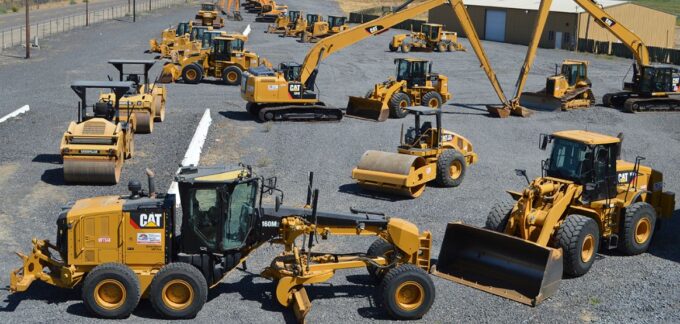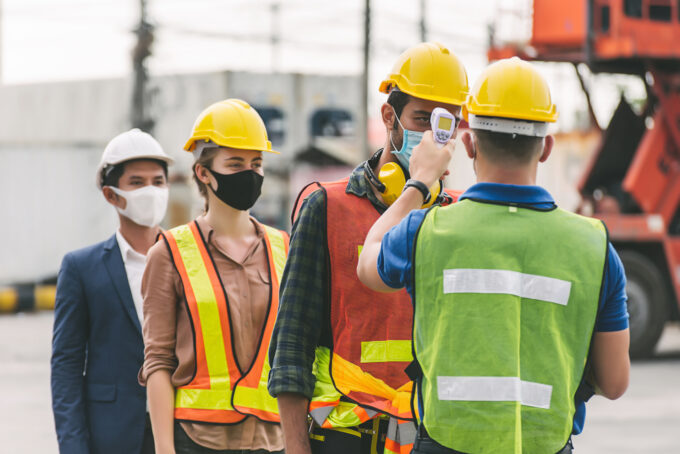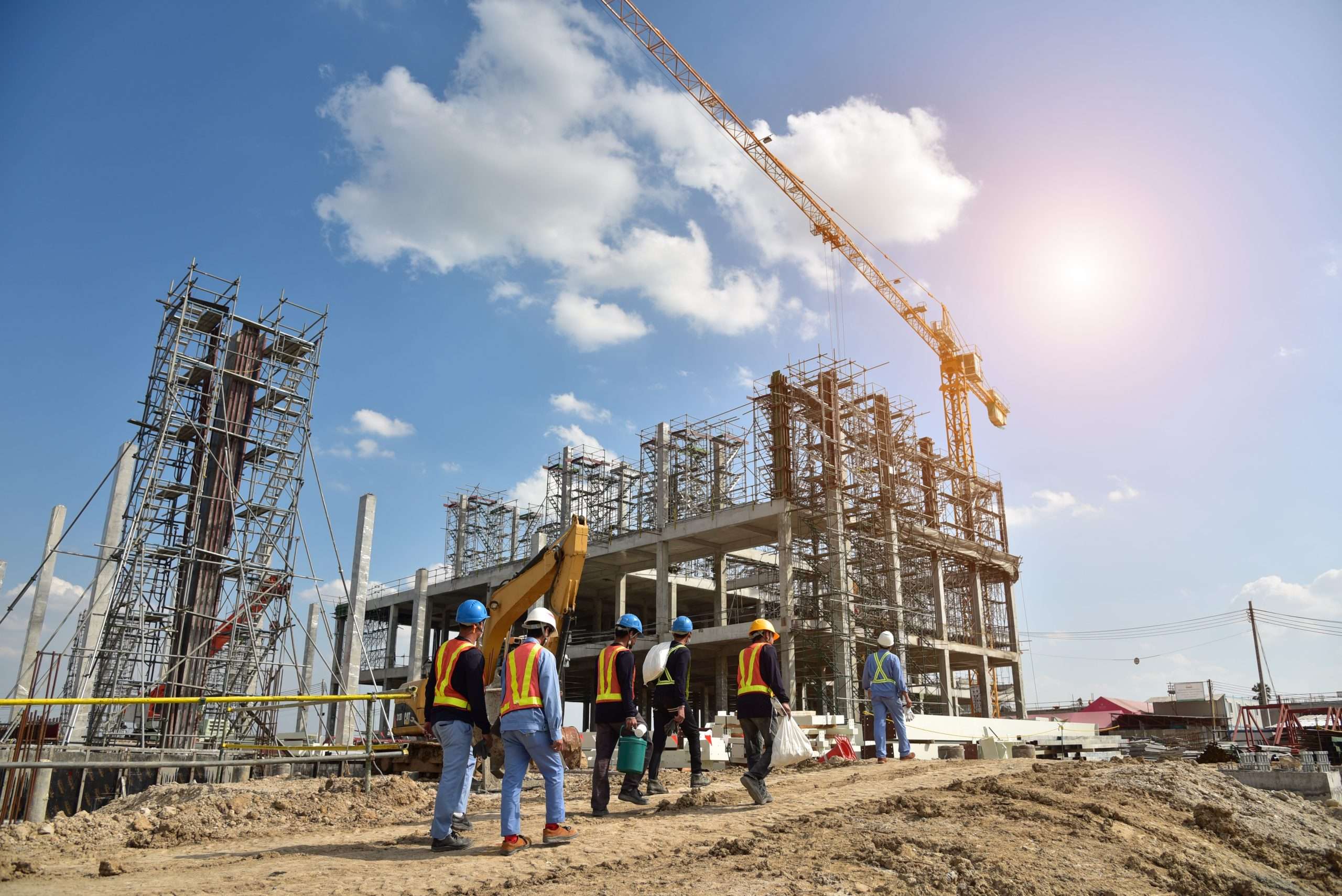Construction is one of the most dangerous professions in the world. In 2019, more than 1,000 construction workers were killed on their job. The obvious dangers of construction are falling from a height or being struck by a falling object, but there are other dangers that construction workers may face, such as breathing in toxic substances.
As dangerous as this job is, it’s still very necessary. So certain tools, technologies, and techniques have to be created in order to ensure a safer construction site. We can swiftly identify the underlying cause of most workplace accidents thanks to an ever-growing collection of data to examine, which means we’ve also established how to address those flaws and minimize injury rates on construction sites. A safer work environment creates more productive employees, and here are five ways to create a safer construction site and reduce injuries.
#1: Personal Protective Equipment (PPE)
Construction workers are at risk for both external and internal injuries— and some injuries damage both the external and the internal. Some of the most common injuries are being struck by objects, whether falling, walking into equipment, or being struck by another worker; breathing in toxic substances that can result in anything from a bad cough or cancer from asbestos poisoning; hearing loss; and even losing limbs. Examples of Personal Protective Equipment include:
- Steel-toed and slip-resistant boots
- Knee pads
- Reflective vests
- Cut-resistant gloves
- Masks
- Goggles
- Ear plugs
- Hard hats
PPE should be worn at all times by all workers on site, and all workers should be trained on the proper way to wear their PPE. Oftentimes, PPE is worn incorrectly, which results in the higher occurrence of preventable injuries. In other instances, some Personal Protective Equipment pieces can be faulty. Still, properly working and correctly worn PPE helps to significantly reduce the occurrence of injuries on construction sites. Also logo printed face covering will bear the company brand as well as will keep safe from dusts, and this unusual time. For more info visit vivipins.com.
#2: Ensure all Equipment is Working Properly

The type of machinery we employ on construction sites now outperforms anything humans have ever been able to operate – and that necessitates a significant degree of downtime responsibilities, such as regularly inspecting and cleaning machinery. Heavy machinery, such as trucks or cranes, cause over 75% of struck-by injuries. You may substantially improve your ability to prevent injury-causing faults by doing regular – and thorough – regular inspection on these massive devices.
When construction equipment fails to work properly, this is a hazard that can lead to injuries and even death. An example of a simple piece of equipment in construction (and in other industries) that can become damaged is a ladder. Missing parts and bent rails increase the risk of work-related falls.
Ladders can also be misused in the construction industry and other industries that may use them. An example would be putting too much weight on the ladder, causing it to become unsteady. This can also result in a serious or fatal fall.
#3: Secure Equipment Setup
In construction, it’s also important that the equipment is secured properly. One major concern in construction is certain equipment being set up too close to power lines. Scaffolding and metal ladders should be set up far away (preferably 10 feet or more) from power lines to prevent accidental electrocution. Scaffolding properly secured to the ground should also be able to hold four times its weight.
#4: Develop a Risk Management System
A risk management system aims to identify and evaluate apparent and potential risks that a construction site poses. Also known as a job hazard analysis, this will help eliminate or minimize risks— therefore reducing construction-related injuries and deaths. The four basic steps to a successful risk management system are as follows:
- Step 1: Take a project and divide it into smaller tasks.
- Step 2: Identify the obvious and potential hazards of each task.
- Step 3: Assess the risks of each hazard.
- Step 4: Establish preventative measures for each hazard.
This may actually need to be the first step to ensure the proper PPE and construction equipment. However, most construction experts have an extensive knowledge of the best equipment for keeping everyone on site safe.
#5: Protect the Job Site

Construction work creates a lot of dust and debris that can be both irritating and harmful to construction workers when they come in contact with it— even when wearing PPE. This construction pollution can also be damaging to the equipment if it’s not contained properly. To protect the workers and the equipment, it’s necessary for construction site managers and workers to contain the dust and debris by installing temporary ceilings and walls.
Safety meetings: Safety meetings are a great way to go over various safety rules and make sure that new staff members are aware of them. Safety meetings are held on a regular basis to remind everyone that safety is just as vital as the job itself. Holding a safety meeting on a regular basis allows staff to be reminded of the hazards identified in the risk assessment. Team leaders and supervisors can be kept informed of any changes and provide suggestions based on what is happening on the work. You may keep safety procedures fresh in your employees’ minds by hosting proper safety meetings. All employees must have a thorough awareness of the company’s safety procedures and why they are necessary.
Construction workers who have been injured on the job usually suffer severe injuries, and can no longer work to support their families. In this case, they’ll need to file a workers’ compensation claim. However, this may not cover all medical costs, so injured construction workers are encouraged to contact RosenfeldInjuryLawyers.
It’s imperative that all workers on a construction site work together to make the site a safer place to work. Accidents do happen in construction, but everyone must be proactive in making sure that these accidents can be prevented as much as possible. By doing this, construction-related deaths can be significantly reduced.









